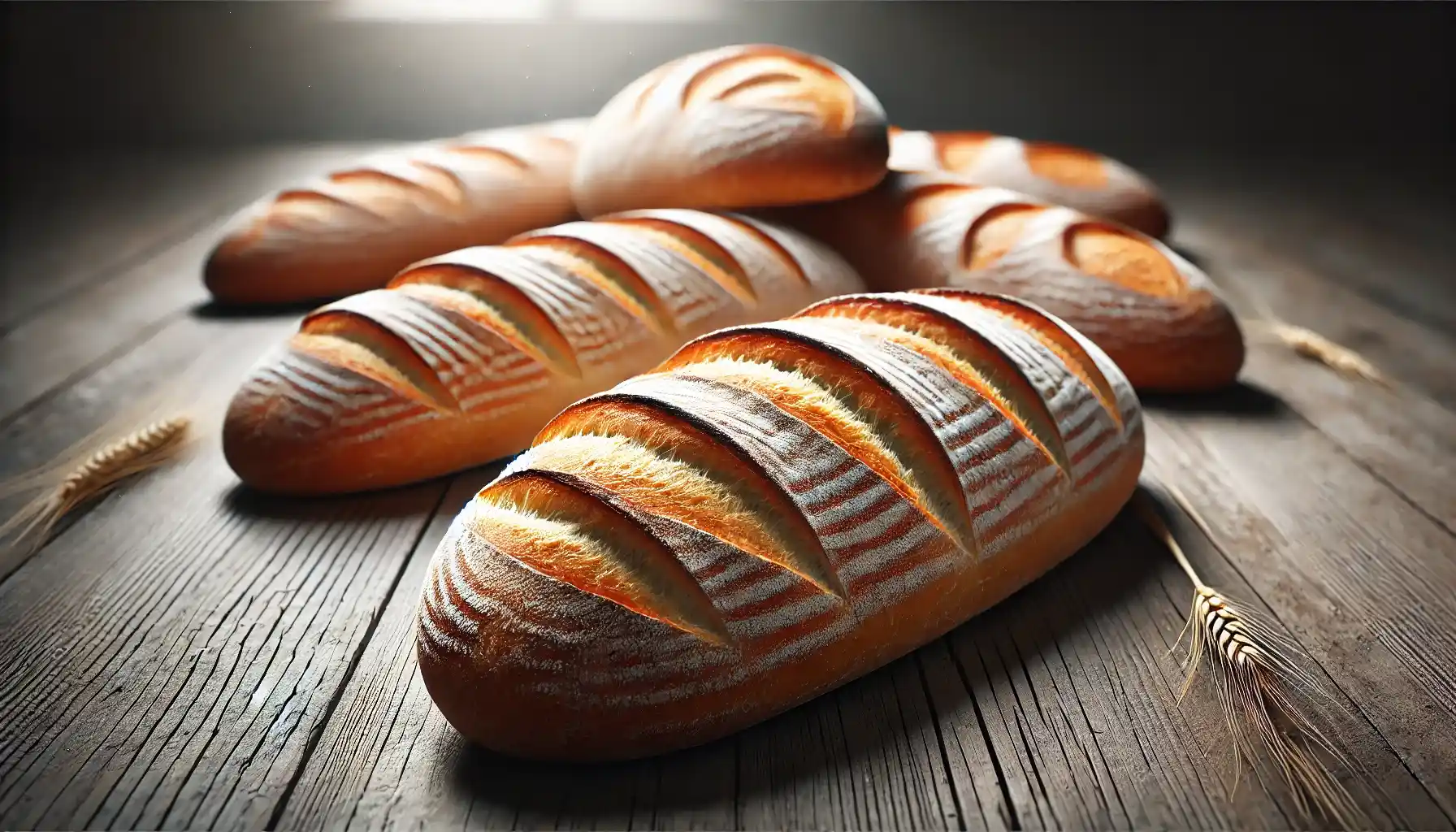There’s something truly special about a warm, freshly baked French baguette with its golden, crispy crust and soft, airy interior. Baguettes are a symbol of French baking, known for their distinctive shape, aroma, and delicate crumb. Although making baguettes at home might seem challenging, it’s a rewarding experience that fills your kitchen with the aroma of freshly baked bread.
This French Baguette Recipe will walk you through each step to create authentic baguettes at home. With a few simple ingredients and a little patience, you can bring the taste of France to your kitchen.
Why French Baguettes?
French baguettes are not only delicious but also versatile. Whether enjoyed on their own, with butter, or as the base for a sandwich, baguettes add a touch of sophistication to any meal. Unlike other breads, baguettes require a long fermentation time, which develops a deep, complex flavor and a crusty exterior that makes them perfect for dipping, spreading, and savoring.
Ingredients Needed for French Baguettes
Before we dive into the step-by-step guide, let’s take a look at the essential ingredients:
- Bread Flour: 3½ cups (500g), for a sturdy texture and gluten development
- Water: 1½ cups (360ml), lukewarm
- Active Dry Yeast: 1 teaspoon
- Salt: 2 teaspoons
Step-by-Step Guide to Making French Baguettes
- Activate the Yeast
- In a small bowl, dissolve the yeast in ½ cup of lukewarm water (around 100°F or 38°C) and let it sit for 5-10 minutes until it becomes frothy. This step ensures that the yeast is active and ready to ferment the dough. Tip: Make sure the water is not too hot, as this can kill the yeast and prevent the dough from rising.
- Prepare the Dough
- In a large mixing bowl, combine the bread flour and salt. Gradually add the activated yeast mixture and the remaining water, mixing until a rough dough forms. The dough should be sticky but manageable.
- Knead the Dough
- Turn the dough onto a lightly floured surface and knead for about 10 minutes until it becomes smooth and elastic. If the dough is too sticky, add a little flour as needed, but avoid adding too much as it can make the bread dense. Tip: Kneading helps develop gluten, which gives the baguette its characteristic chewiness.
- First Rise (Fermentation)
- Place the kneaded dough in a lightly greased bowl, cover it with a damp cloth, and let it rise in a warm area for 1 to 1½ hours, or until it doubles in size. Tip: A longer rise enhances the flavor. For a deeper flavor, consider refrigerating the dough for a few hours or overnight before proceeding.
- Shape the Baguettes
- After the first rise, gently deflate the dough and divide it into three equal pieces. Shape each piece into a rough log, then roll each into a long, narrow baguette shape, about 12-15 inches in length.
- Place the baguettes on a baking sheet lined with parchment paper, leaving some space between them. Cover with a damp cloth and let them rise for another 30-45 minutes until slightly puffy.
- Preheat the Oven and Prepare for Baking
- Preheat your oven to 475°F (245°C). Place an oven-safe dish filled with water on the bottom rack to create steam, which helps develop a crispy crust.
- Score the Baguettes
- Just before baking, make a few shallow diagonal slashes along each baguette using a sharp knife or bread lame. This allows the baguettes to expand fully during baking.
- Bake the Baguettes
- Place the baking sheet on the middle rack and bake for 20-25 minutes until the baguettes are golden brown with a crisp crust. If you want an extra-crispy crust, spray the baguettes with water a few times during the first 10 minutes of baking.
- Cool and Serve
- Remove the baguettes from the oven and let them cool on a wire rack for at least 10 minutes before slicing. This allows the crust to set and the crumb to stabilize.
Common Mistakes to Avoid When Making French Baguettes
Making baguettes can be challenging, but avoiding these common mistakes will help ensure great results:
- Using Too Much Flour: Adding too much flour during kneading can make the dough stiff, resulting in a dense baguette.
- Skipping the Steam: Steam is essential for creating a crispy crust. Be sure to add a water-filled dish or spray water into the oven during baking.
- Over-Kneading: While kneading is necessary, over-kneading can make the dough tough. Knead until the dough is smooth and elastic, then stop.
Variations of French Baguettes
Once you’ve mastered the classic baguette, you can experiment with different flavors and variations:
- Garlic and Herb Baguette: Mix minced garlic and chopped herbs like rosemary or thyme into the dough for a flavorful twist.
- Cheese Baguette: Add shredded cheese to the dough, or sprinkle it on top of the baguette before baking.
- Whole Wheat Baguette: Substitute part of the bread flour with whole wheat flour for a nuttier flavor and added fiber.
Nutritional Benefits of French Baguettes
While baguettes are primarily made of flour and water, they do offer some nutritional benefits:
- Good Source of Carbohydrates: Baguettes provide energy-boosting carbohydrates, making them great for breakfast or as part of a balanced meal.
- Low in Fat and Sugar: Traditional baguettes contain little to no added sugar and are naturally low in fat.
- Versatile Pairing: When paired with vegetables, lean proteins, and healthy fats, baguettes can be part of a balanced and nutritious meal.
Tips for Storing and Reheating French Baguettes
Baguettes are best enjoyed fresh, but here’s how to store and reheat them:
- Storing: Store leftover baguettes in a paper bag at room temperature for up to 2 days. Avoid storing in plastic, as this can make the crust soggy.
- Reheating: To bring back the crispy crust, sprinkle the baguette with water and heat it in a preheated oven at 350°F (175°C) for 5-7 minutes.
Final Thoughts
French baguettes are a classic bread that requires patience and practice, but the reward is well worth the effort. This French Baguette Recipe provides a step-by-step guide to creating authentic baguettes at home, with a golden crust and soft crumb that’s perfect for any meal.
So why not try your hand at baking these iconic loaves? With a few basic ingredients, you can enjoy the satisfaction of homemade baguettes and a true taste of French baking.


